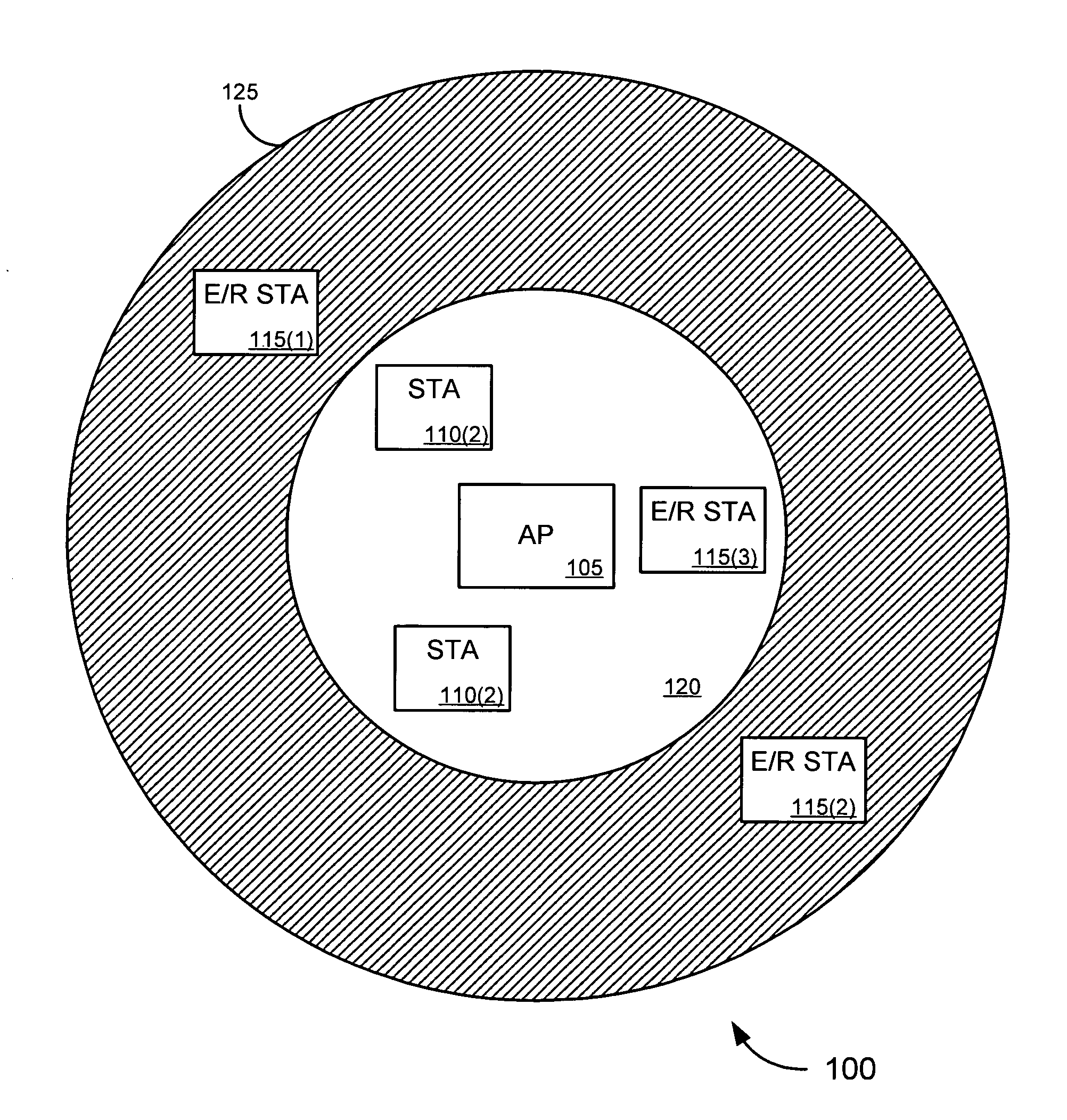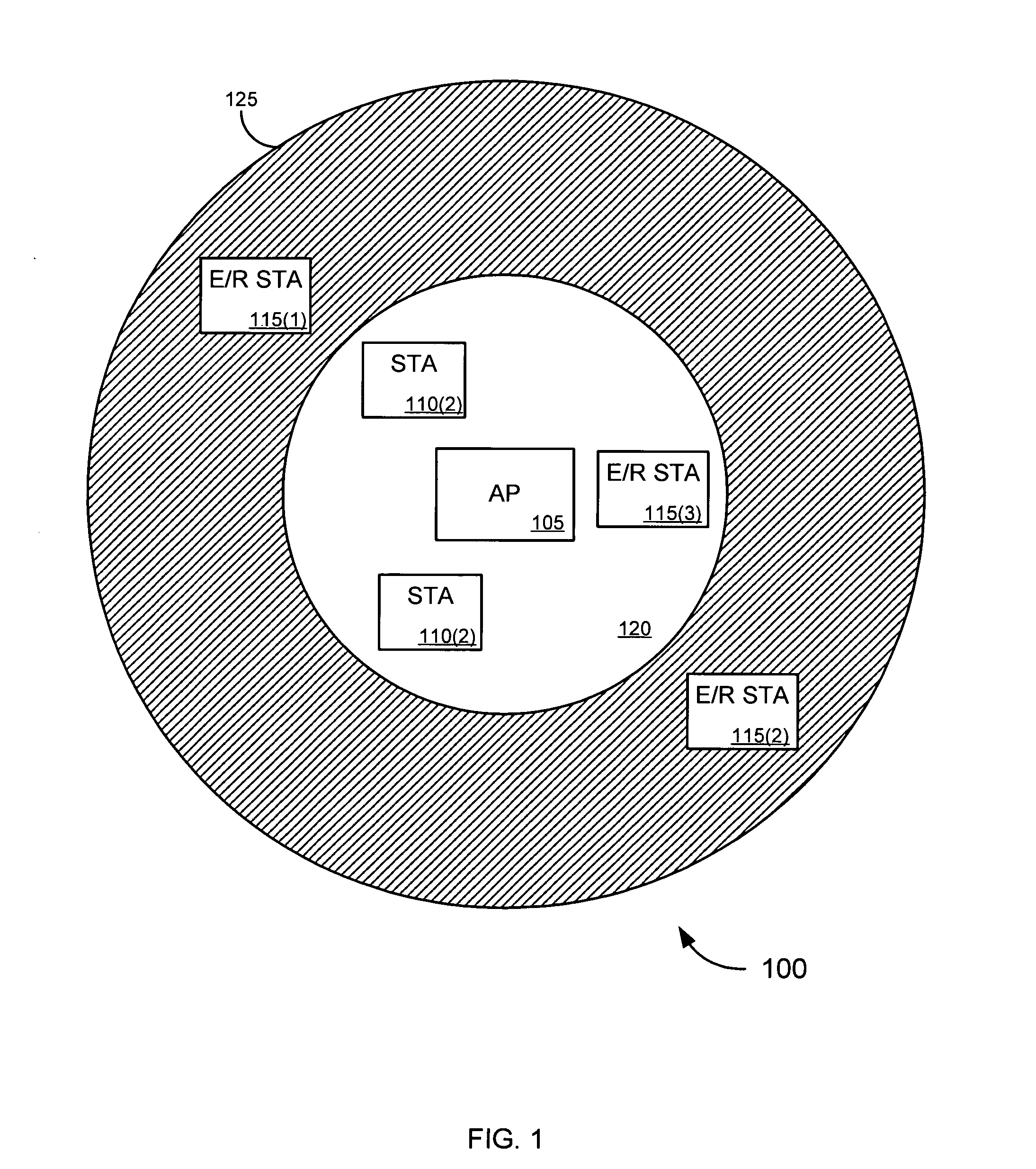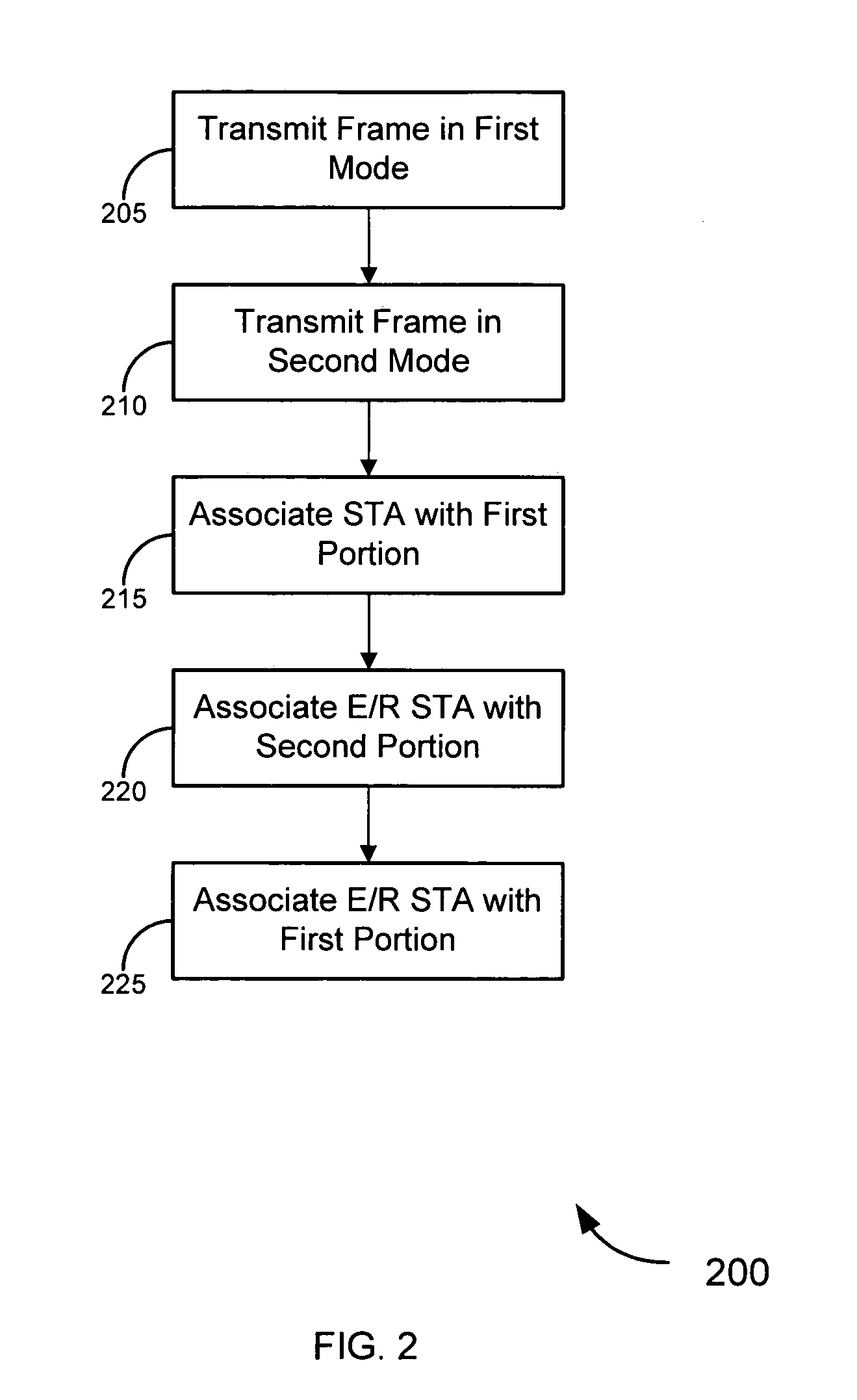Mac-level protection for networking extended-range and legacy devices in a wireless network
a wireless network and legacy device technology, applied in the field of wireless networks, can solve the problems of users being forced to upgrade and/or replace their laptop computers, wireless networks are relatively more susceptible to environmental conditions than their wired counterparts, and wireless networks are relatively more susceptible to environmental conditions
- Summary
- Abstract
- Description
- Claims
- Application Information
AI Technical Summary
Benefits of technology
Problems solved by technology
Method used
Image
Examples
Embodiment Construction
[0028] The invention provides solutions, including devices, systems, methods and software, for allowing interoperability between legacy stations and extended-range stations in a wireless network. In particular embodiments, the invention implements MAC layer protection (including, without limitation, traditional MAC layer control frames) to provide such interoperability. Merely by way of example, in an embodiment, an access point may be configured to transmit control communications (such as beacon frames, broadcast frames, multi-cast frames, etc.) in a first mode and / or a second mode. The first mode might not employ extended-range technology, such that communications transmitted in the first mode can be received and / or interpreted by legacy stations, while the second mode might employ extended-range technology, such that communications transmitted in the second mode can be received by extended-range stations outside (as well as possibly within) the range of basic-range communications...
PUM
 Login to View More
Login to View More Abstract
Description
Claims
Application Information
 Login to View More
Login to View More - R&D
- Intellectual Property
- Life Sciences
- Materials
- Tech Scout
- Unparalleled Data Quality
- Higher Quality Content
- 60% Fewer Hallucinations
Browse by: Latest US Patents, China's latest patents, Technical Efficacy Thesaurus, Application Domain, Technology Topic, Popular Technical Reports.
© 2025 PatSnap. All rights reserved.Legal|Privacy policy|Modern Slavery Act Transparency Statement|Sitemap|About US| Contact US: help@patsnap.com



